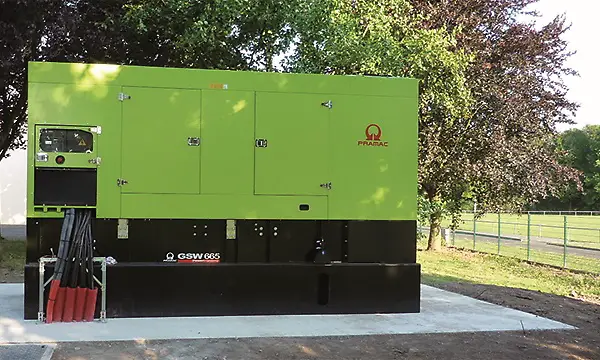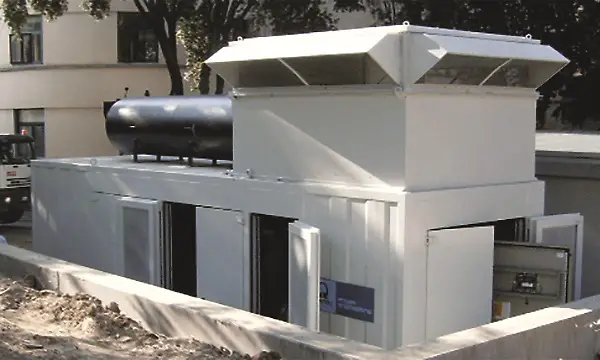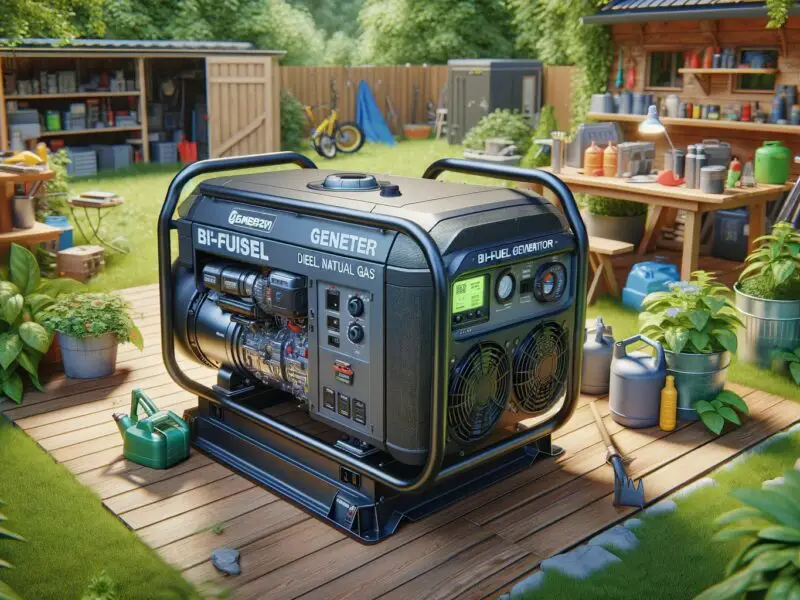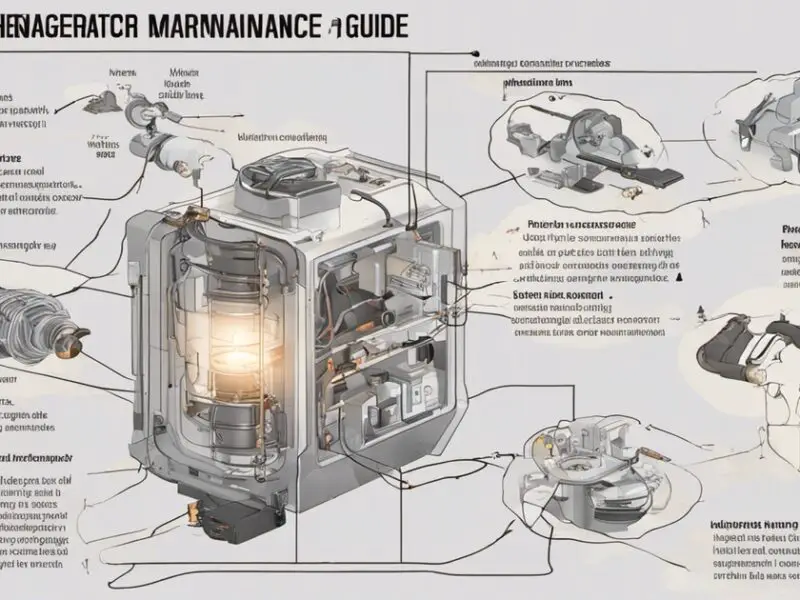Hospitals consume a lot of power. According to the Commercial Building Energy Consumption Survey (CBECS) report 2013, hospitals make up just under 1% of all commercial facilities yet consume 4.3% of the total electricity delivered to the commercial sector.

These findings aren’t surprising, considering that hospitals run 24/7 and attend to hundreds of people daily. Moreover, hospitals run complex equipment and laboratory technologies that consume a lot of power – and sometimes run 24/7.
Above all, hospitals must feed and dress admitted patients. So, they also require electricity to prepare and store food and do laundry.
The Blackout Nightmare
Therefore, a blackout at the hospitals could easily mean the loss of lives, among other damages. A power outage, whether during the day or night, means that patients who rely on oxygen supply and other electrically-power equipment are in danger. It can also cause delicate drugs to go bad and typically leaves doctors and nurses unable to do their jobs with precision.
Recordkeeping, patient monitoring, and food preparation and storage are other activities that would grind to a halt.
The problem is even bigger if the blackout happens at night. Pretty much everything would come to a standstill, meaning dozens of lives would be at risk even at mid-level hospitals.
As a result, hospitals must have backup power solutions to step in whenever grid power fails. It’s both a practical solution and a government requirement.
The rest of this guide looks at what facility managers should know when shopping for a hospital backup generator, including the most important purchase factors. We also discuss maintenance tips for hospital backup generators and answer common questions when buying a backup generator for the health sector.
Do Hospitals Need Backup Generators?
Yes, hospitals critically need backup generators. Standby or backup power provides sustained power during grid outages. The following are a few benefits of backup power for hospitals;
-
Sustain day-to-day operations
The biggest advantage of backup generators and backup power in general for the healthcare industry is that it allows hospitals to continue providing basic services and running day-to-day activities. These include lab tests, scans, x-rays, routine exams, and inpatient services that provide ongoing treatment for patients in recovery.
-
Backup generators can save lives
Nearly every mid-level hospital and above has a patient on life support. These include patients who need surgery, blood, medical supplies stored in refrigerators and those who depend on electric-powered life-support machines. Backup generators can save these people’s lives when grid power is lost.
-
Getting through natural disasters
Natural disasters, such as floods, hurricanes, and strong winds can easily uproot power poles and bring down the cables, leaving an entire neighborhood in darkness. Hospitals also need a backup power solution, such as a generator, to get through such disasters. A standby generator will kick in automatically as soon as grid power is lost, allowing the hospital to sustain operations.
How Do Hospital Backup Generators Work?

Backup hospital generators are typically standby generators. Standby generators are independent power sources that sit separately to grid power and immediately engage when grid power goes out. That way, they ensure continued electricity supply despite the grid outage.
However, what makes the standby generator different from other generator types is the automatic transfer switch (ATS). The automatic transfer feature automatically engages the generator when grid power is lost.
The ATS feature enables the generator to constantly monitor grid power in the building and instantly sense blackouts. It is also designed to immediately command the standby generator to start and at the same time transfer the facility’s load from the power grid to the generator’s supply.
What Kind of Generators Do Hospitals Use?
Most hospitals use diesel generators, though an increasing number of facilities are turning to gas and bi-fuel models for even greater efficiency and reliability. However, you’ll main come across four generator types when shopping for a backup generator for your hospital;
- Diesel generators: Diesel generators for hospitals are some of the most powerful generators. These units can go up to 14,000 kW. That’s more than enough to power an entire large hospital. The units are typically built to world-class standards and offer exceptional efficiency and fuel consumption.
- Gas generators: Gas generators aren’t as powerful as their diesel-powered counterparts. However, they can still offer up to 9,700 watts. Moreover, diesel engines can accommodate other fuels, such as natural gas, biogas, propane, and newer fuels.
- Microgrid systems: Microgrids and renewable energy systems allow hospitals and other healthcare facilities to harness wind, solar, and water to generate backup power. If you’re keen on installing a high-efficiency, highly-reliable backup power system for your facility, then this is the way to go. The only downside is high upfront costs.
- Mobile generator sets: Since whole-facility backup generators can be bulky, thus difficult to move, a few manufacturers now make unique mobile generator sets for facilities that may need to move their stations from time to time. This can be especially beneficial for field clinics and similar events.
General Standards for Hospital Generators
Once you’ve identified the generator type that best suits your application, the next step is to familiarize yourself with the National Fire Protection Association (NFPA) guidelines, so you don’t end up breaking the law.
You can check the NFPA website for the complete list of requirements. Generally, you only need to worry about NFP 70, NFP 99, NFP 101, and NFP 110. However, feel free to read the other sections, too, so you’re fully aware of what’s required of you when installing a hospital backup power system.
Anyway, we’ll only focus on the four primary requirements;
-
Sources of power
First and foremost, the NFPA also states clearly that health facilities need at least two independent sources of power, with one of the sources located on the site. It assumes that health facilities utilize grid power as the primary power source. However, it also mentions that an “alternate” power source is mandatory.
So, if you initially thought that backup power in the hospital is a choice, there you have it. It’s a legal requirement.
It further states that the backup generator must be located on the site. Furthermore, the location must be carefully coordinated to ensure that failure at one source will not impact the other.
-
Standards for Emergency and Standby Power Systems (NFPA 110)
The NFPA identifies six classifications of emergency supply systems, five types of EPSSs, and two levels of EPSS equipment. More importantly, the body identifies the best generator types for each category and how to distribute the power.
Section 110 focuses on priorities. It states that you must make sure that the backup power system can operate life safety activities before moving to critical processes, and finally, standard equipment supporting clinical activities.
Following these requirements will help you determine the best size backup generator for your health care facility.
-
Fuel capacity requirements
How much fuel must you have in the standby generator at any given time? You probably think it’s up to you and perhaps the facility’s board. But it isn’t. NFPA 70 Article 700 requires a minimum of two hours for operation at full demand. Then NFPA 101 says that you must also provide at least 1.5 hours of full illumination of egress and exit signs following a power outage.
You should also check NFPA 99. It states emergency run time requirements depending on EPSS categories. Although it doesn’t mention figures, it defers the responsibility to local authorities having jurisdiction (AHJ), meaning you need to observe your local authority’s requirements.
Most local authorities require 24 to 96 hours of continuous operation, depending on the location and potential hazards. Typically, you need 96 hours of continuous backup power in areas likely to experience an extended power outage.
-
Paralleling and distribution
Finally, the NFPA guidelines also discuss paralleling requirements and distribution equipment. First off, the association recommends paralleling for large hospitals or campus environments to improve the reliability of the backup power source and provide flexibility to add or shed loads as necessary.
Additionally, it recommends taking advantage of advanced technologies to ensure that you always have backup power even if one of the paralleled generators fails. For instance, paralleling switchgear arrangements allow the simultaneous start of two generators.
You’ll also find grounding requirements in NFPA 99, which states that Category one spaces in hospitals require two steps of ground-fault protection (GFP).
We strongly recommend that you peruse the rest of the NFPA guidelines document to know what the law requires when purchasing, installing and using backup generators in health care settings.
Testing and Maintenance Requirements
Testing and maintenance are critical to the continued reliability of emergency generators. Thus, hospitals must perform testing and maintenance according to the manufacturer’s recommendations, instructions, manuals, NFPA minimum requirements, and AHJ guidelines.
Requirements for routine maintenance and operational testing of hospital generators are found in chapter eight of the 2010 edition of NFPA 110 and section six of the 2012 edition of NFPA 99. The following is a summary of what you need to know;
- Your facility must have at least two sets of instruction manuals for all major backup power generator systems.
- All special tools for backup generator testing and routine maintenance must be readily available as needed.
- A properly trained professional must oversee all routine inspections, maintenance activities, and operational testing. More importantly, the facility must keep evidence of such training in the employees’ personnel file. However, hospitals are allowed to contract qualified third-party vendors in the absence of an in-house solution.
- Although the NFPA doesn’t establish specific testing dates (the duty falls to facility managements), NFPA 99(12) demands at least 12 generator tests per year, 20 to 40 days apart, as the facility finds convenient.
- Testing documentation is mandatory and must include information on the identification of the tested generator, the date the generator was installed/placed in service, sign or initials of the tester. ATS identification and reports on unsatisfactory conditions alongside action taken, including the replaced parts.
How Hospitals Can Keep Backup Generators Prepared
No one knows when disaster may strike. For this reason, hospitals and other health facilities must practice best practices to be fully prepared in case of an emergency. We recommend the following preparedness tips;
-
Meet necessary standards
The most crucial step in backup power preparedness is to follow all the formal standards governing the industry. While we encourage facilities to go above and beyond the standards, attaining the requirements should be the bare minimum.
For instance, ensure that your facility has enough power to supply the entire facility for at least two full hours at full load. Additionally, your backup generator system must kick in and start supplying power within 10 seconds of a grid blackout.
-
Ensure weekly inspections
Although the NFPA doesn’t tell you exactly when to have inspections and operational testing, we believe that the best strategy is to test our systems at least once weekly. This way, your generators will be ready to step up in case of a grid outage.
Specifically, you need to check the generator system to ensure that none of the parts are broken, rusted, or corroded. Also, check the fuel (both the level and quality), lubrication system (including oil levels), cooling and exhaust system, and the battery system.
-
Consider advanced monthly tests too
Unfortunately, ongoing weekly maintenance activities may not capture and address all issues. Therefore, we recommend advanced monthly tests on parts not usually tested during weekly routines.
For instance, a diesel generator must be exercised at least once every month for a minimum of 30 minutes. NFPA 110 outlines three different ways to test your generator in section 8.4.2. Similarly, spark-ignited generators that run on gas, petrol, natural gas, and propane must also be exercised for at least 30 minutes once a month.
-
Ensure staff training
It is critical to train your staff to act appropriately in case of a power outage. For instance, every employee must know how to operate, inspect, and maintain the backup generator. This way, you don’t have to stay in the darkness during an outage because the “techies” are off.
Additionally, employees must understand the importance of staying calm in case of an outage that lasts longer than anticipated. Additional safety and operational protocols can help ensure organized movement to prevent panic.
The Rise of Modular Backup Power Generators for Hospitals
The unique demands of the healthcare sector have recently given rise to new technologies that guarantee better reliability and convenience. One example is the modular generator, better known as the Modular Power System (MPS) generator.
Modular power systems offer redundancy, scalability, and safety benefits through integrated paralleling. This means that you don’t need to worry about manually paralleling two or more generators. Built-in paralleling also provides flexibility for growth, reduces required room space, and reduces initial capital costs.
Better still, MPS generators are typically multi-fuel units that can run on various fuels, including diesel and natural gas, without significant modifications.
Summary
Shopping for a backup generator for a hospital is significantly different from standard generator shopping. Although standard considerations such as size and fuel type are still critical, other factors such as the National Fire Protection Agency (NFPA) and National Electric Code (NEC) requirements are even more critical.
So, it’s imperative to seek professional input. Engaging the relevant agencies throughout the shopping and installation process can also help.




